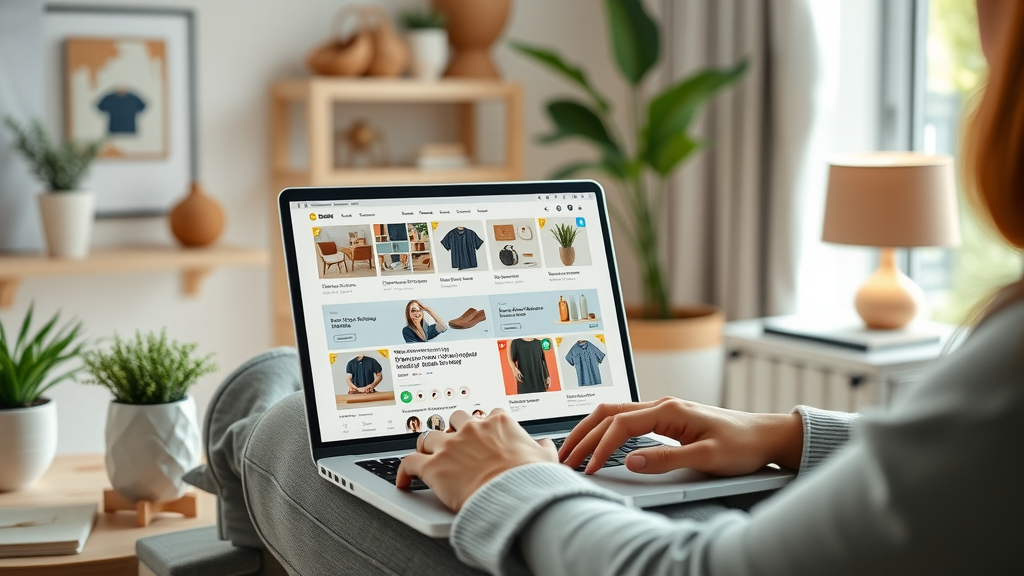
"80% of consumers are more likely to purchase from brands that offer personalized experiences"—a fact that reveals why content personalization strategies are no longer optional for businesses seeking competitive advantage.
Imagine if every message, offer, and product recommendation your customers received felt tailor-made for them—because it was. With content personalization strategies , this level of laser-targeted marketing isn't just possible, it's essential. As digital noise grows louder, cutting through with relevant content transforms passive browsers into lifelong brand advocates. Dive into this comprehensive guide to learn why savvy brands are doubling down on personalized content and how you can too—starting today.
- Why content personalization is redefining modern marketing best practices
- How to harness customer data for maximum engagement and conversion rates
- Step-by-step frameworks and actionable examples for deployment
- Real-world use cases: e-commerce, SaaS, landing pages, and more
- Tactics to avoid common pitfalls and scale your personalization efforts
Why Content Personalization Strategies Are Essential for Modern Marketing
- Rising Consumer Expectations: Today, buyers demand more than generic email blasts—they expect unique, timely, and targeted experiences at every digital touchpoint. Brands using content personalization strategies consistently outperform their competitors.
- Competitive Advantage: When your marketing campaigns deliver personalized content, you immediately boost customer engagement and foster brand loyalty. Real examples include Netflix's custom movie queues, Amazon’s dynamic content, and Spotify’s personalized playlists—they aren't just convenient; they drive spikes in conversion rate and keep users coming back.
The driving forces behind adopting content personalization strategies are clear: conversion rates soar, customer experience is enhanced, and targeted communication turns one-time visitors into loyal brand fans. By leveraging customer data and dynamic content , you transform each marketing campaign into an immersive, highly relevant journey. In short, brands refusing to embrace personalization risk falling behind in a marketplace that prizes hyper-relevant tailored content .

What You’ll Gain by Deploying Content Personalization Strategies
- Unlock higher conversion rates by captivating your ideal target audience with precision-crafted messages, offers, and recommendations.
- Boost customer engagement as users interact more with content, emails, and websites that reflect their unique preferences.
- Skyrocket brand loyalty by fostering deeper relationships through ongoing, relevant communication across all marketing campaigns.
| Traditional Content | Personalized Content | |
|---|---|---|
| Conversion Rate | Low to Moderate (generic messaging) | High (targeted messaging) |
| Customer Experience | Impersonal, forgettable | Relevant, memorable, engaging |
| Customer Engagement | Short-lived, low interaction | Deep, ongoing, interactive |
Understanding Personalized Content: Definitions, Benefits, and Market Trends
Defining Content Personalization, Personalized Content, and Personalization Strategies
Content personalization strategies involve tailoring digital content—emails, product recommendations, website experiences, and more—to individual preferences, behaviors, and demographics. Personalized content is any message, offer, or asset adapted to a unique recipient or audience segment, ensuring every interaction feels relevant. At their foundation, personalization strategies use customer data (like purchase history, browsing behavior, and location) to guide messaging, dynamic content blocks, and product suggestions in real time.
This approach isn’t limited to retail; SaaS, B2B, and service industries all rely on a robust content personalization strategy to improve marketing campaign performance. As audiences fragment and demand grows for bespoke experiences, learning to deliver personalized content across every channel becomes a strategic imperative for brand growth.
Notable Trends in Content Personalization and the Growth of Dynamic Content
The landscape of content personalization is rapidly changing. Today, AI-driven algorithms and automation power dynamic content , enabling brands to instantly swap headlines, images, offers, and subject lines based on real-time signals or data triggers. Brands are now using advanced segmentation to deploy relevant, personalized experiences across every landing page , email, and social media feed.
Other notable trends include hyper-personalization—adapting not just by broad demographics but by individual actions during the customer journey—and integrating personalization across multiple marketing campaigns for a truly seamless experience. This evolution is driving higher conversion rates , making dynamic content an essential layer of the modern marketing strategy .

The Framework: Key Pillars of Successful Content Personalization Strategies
Integrating Customer Data for Precise Audience Segmentation
The foundation of effective content personalization strategies is robust customer data integration. By aggregating data—from purchase history and previous interactions to browsing behavior and location—you gain valuable insights into what makes each audience segment unique. With the right data, you can segment your contacts by demographics, intent, buying stage, or even psychographics, ensuring your personalized content is both relevant and timely.
Analytics tools and CRM systems let you build rich customer profiles and map your target audience down to granular details. This segmentation powers meaningful connections by surfacing offers and relevant content guaranteed to resonate with each individual customer . The outcome? Improved customer engagement, deeper customer experiences , and measurable boosts in conversion rates .
Leveraging Dynamic Content for Real-Time Personalization
Dynamic content transforms static marketing into living experiences. By embedding content that changes based on user data or behavior, your website, email, and product recommendations become instantly meaningful. For example, an ecommerce brand might replace homepage banners and product recommendations in real time depending on what each visitor browses or buys.
Incorporating dynamic content in email campaigns ensures that even the subject line and product grids adapt to individual interests or past purchases. This approach not only delights users but also drives engagement and conversion, driving your content personalization strategy forward.

Orchestrating Email Marketing and Personalized Email Campaigns
Email marketing remains a powerhouse for deploying personalized content . By designing personalized email campaigns—using segmentation, dynamic CTAs, and recommended products—marketers achieve higher open rates, click-throughs, and overall conversion rate . Automation tools enable brands to trigger emails based on lifecycle stages, behaviors, or cart abandonment, ensuring every message arrives at the right time with maximum relevance.
Beyond transactional messages, modern email campaigns can nurture leads, celebrate milestones, or reward loyalty—all powered by dynamic content blocks that adapt in real time. This multi-layered approach enhances customer experiences and strengthens brand relationships over time.
Segmenting Your Audience for Ultra-Targeted Product Recommendations
Delivering the right product recommendation to the right person at the right time is a hallmark of mature personalization strategies . By leveraging your segmented audience data, you can automate recommendations based on browsing habits, purchase history , or stated preferences. This approach not only increases conversion but also boosts cart size and overall lifetime value.
Across e-commerce, SaaS, and content websites, segmenting for personalized content means every visitor feels seen. By embedding tailored product recommendations on landing pages, emails, and checkout flows, your brand delivers the seamless, relevant content customers crave.
"Personalization is not a trend—it’s a marketing strategy imperative."
The 4 D’s of Personalization: Define, Derive, Deploy, Deliver
Animated breakdown: The 4 D's of content personalization strategies in action
- Define: Identify your ideal customer segments and business goals
- Derive: Unlock actionable insights from customer data to understand intent and preferences
- Deploy: Implement dynamic, tailored messaging and experiences across platforms
- Deliver: Optimize over time based on performance data and feedback—ensuring long-term customer satisfaction
By mastering each step, your organization ensures every personalization effort is rooted in data, innovation, and customer-centricity—resulting in more impactful marketing campaigns .
Launching Content Personalization Strategies: Step-by-Step Process
- Audit and Analyze Customer Data: Assess existing data sources, quality, and compliance.
- Map Audience Segment and Persona: Define user segments and build actionable personas for tailored messaging.
- Select Dynamic Content Tools and Platforms: Identify personalization engines, CRM tools, A/B testing platforms, and email automation solutions that fit your business size and sector.
- Design Personalized Content Experiences: Create content and offers adapted to each segment and channel.
- Test, Measure, Refine: Launch, analyze key metrics, and iterate for ongoing optimization.

| Category | Popular Solutions |
|---|---|
| Customer Data Platforms (CDP) | Segment, BlueConic, Salesforce CDP |
| Email Marketing | Mailchimp, HubSpot, ActiveCampaign |
| Personalization Engines | Optimizely, Dynamic Yield, Adobe Target |
| Analytics | Google Analytics, Amplitude, Mixpanel |
Personalized Content in Action: Landing Pages, Product Recommendations, and Beyond
Elevating Landing Page Conversion Rates with Dynamic Personalization
A high-performing landing page caters directly to the visitor’s intent. By using dynamic content , brands adjust headlines, calls-to-action, or even images based on user attributes—location, source, or behavior. This results in dramatically better conversion rates , as users encounter content precisely aligned to their needs or stage in the buying journey.
For example, SaaS providers often segment landing pages for free trial users, enterprise leads, or returning customers. With the right content personalization strategy , each segment sees only what’s most relevant, reducing bounce rates and improving overall customer experience .
Personalized Product Recommendations: E-commerce and SaaS Use Cases
In e-commerce, personalized product recommendations fuel incremental sales and return visits. Recommendation engines analyze browsing and purchase history to suggest new or related products directly on landing pages , product detail views, and checkout flows. SaaS companies employ similar logic to recommend new features, upgrades, or educational content based on user role and engagement.
This focus on tailored content ensures every visitor feels understood—driving up average order values, reducing churn, and boosting customer engagement . For rapidly scaling brands, product recommendations are a non-negotiable element of sustainable personalization efforts.

Enhancing Email Marketing Campaigns with Content Personalization Strategies
Email campaigns offer unmatched reach and ROI for smart personalizers. Marketers now deliver personalized emails containing curated offers, customized news, and behavior-triggered nudges. Dynamic subject lines and content blocks maximize open and click-through rates while making recipients feel valued.
Tactics such as celebrating user anniversaries, highlighting recently viewed products, or sharing tips tailored to an individual customer's journey deepen relationships and nurture long-term loyalty. The key? Iterate, test, and optimize each campaign, blending insights from customer data and user feedback to refine your approach.
Video: Showcase: Effective product recommendation engines and personalized landing pages
Measuring the Impact: Tracking Conversion Rate and Customer Engagement
Key Metrics: From Conversion Rates to Customer Experience KPIs
To evaluate your content personalization strategies , monitor a blend of quantitative and qualitative indicators: conversion rate , click-through rate (CTR), open rate, average time on page, repeat purchase rate, and customer experience scores. Effective measurement reveals which segments respond best, which triggers drive action, and where optimization opportunities exist.
Tracking customer engagement across emails, web, and mobile helps refine future campaigns—ensuring your personalization efforts stay aligned with shifting behaviors. Benchmarking these metrics over time validates your marketing investments and uncovers hidden growth drivers.
Testing and Optimizing Content Personalization Efforts
A/B testing and multivariate analysis are indispensable for refining your personalization strategy . By comparing headlines, images, offers, and triggers, you’ll discover what motivates each audience segment to convert. Use ongoing feedback and iterative experimentation to weed out underperforming assets and double down on what works best.
Invest in dashboards to visualize personalization progress and share key learnings across your team. The result: a continuous cycle of improvement that enables more relevant, engaging, and profitable customer experiences.
| Metric | Personalized Campaign | Traditional Campaign |
|---|---|---|
| Open Rate | 34% | 16% |
| Click-Through Rate (CTR) | 21% | 9% |
| Conversion Rate | 13% | 5% |
| Time on Page | 3:20 min | 1:45 min |

Advanced Personalization Strategies for Next-Level Marketing Campaigns
AI-Driven Content Personalization and Recommendation Systems
Artificial intelligence supercharges content personalization strategies by analyzing vast datasets and predicting user intent in real time. Powered by machine learning, AI-driven recommendation systems surface hyper-relevant products, articles, or offers—often before a customer knows to ask. This automation eliminates guesswork and scales personalization across millions of touchpoints.

Dynamic, Cross-Channel Personalization—From Social Media to Email Campaigns
Modern marketing demands consistent personalized content across all channels. Brands are weaving personalization into social media , web, in-app messaging, and email—tracking cross-device journeys and adapting content in the moment. By syncing audience data and personalization features platform-wide, brands create seamless, memorable customer journeys that multiply engagement and conversion.
"Customers crave relevant, immersive experiences—the future is hyper-personalized."
What are the 4 D's of personalization?
- Define: Clarify desired business outcomes and segment your users
- Derive: Extract actionable insights from customer data
- Deploy: Launch dynamic, segmented messaging and offers
- Deliver: Maintain and optimize ongoing personalization efforts
How to do content personalization?
- Set clear objectives and identify your target audience
- Collect and consolidate customer data from web analytics, CRM, purchase history, and more
- Segment your audience for personalized content delivery
- Deploy personalization tools: recommendation engines, dynamic content generators, and automated email campaigns
- Iteratively test, measure, and refine every marketing campaign for improved conversion and engagement

What is a personalization strategy?
- A personalization strategy defines the roadmap for tailoring experiences, offers, and communication to match user data, expectations, and intent. It establishes clear goals, channels, and measurement methods—ensuring each personalization effort supports sustainable brand growth and competitive differentiation.
What are the five promises of personalization?
- Relevance: Every interaction is tailored, not generic
- Timeliness: Content and offers arrive at the optimal moment
- Engagement: Customers feel seen, boosting interaction and loyalty
- Loyalty: Personalized experiences deepen brand connection
- Measurable Results: Success is proven by increased conversion rates and lasting relationships
How to Avoid Pitfalls: Challenges and Best Practices in Content Personalization Strategies
- Challenge 1: Privacy Concerns and Customer Trust. Ensure transparency in data usage—let users control their preferences and understand your approach.
- Challenge 2: Data Silos and Inconsistencies. Integrate systems and commit to regular data hygiene for reliable insights.
- Challenge 3: Scaling Dynamic Content Creation. Invest in automation, modular content design, and scalable tools.
- Best Practices: Stay transparent, prioritize data security, test iteratively, and continuously optimize all personalization efforts to sustain growth.
Frequently Asked Questions about Content Personalization Strategies
-
How can small businesses implement content personalization strategies on a budget?
Start by segmenting your existing customer data , use affordable email automation and website plugins, and focus on a few high-impact touchpoints such as personalized landing pages and tailored email campaigns . -
What data is most useful for building personalized content?
Useful data includes demographics, browsing and purchase history , engagement with previous campaigns, and stated customer preferences—all crucial for a successful content personalization strategy . -
Are there risks to over-personalization in marketing campaigns?
Yes. Over-personalization can feel invasive. Respect boundaries, avoid using sensitive data without consent, and always test to ensure customers feel valued—not watched.
Future Trends: Where Will Content Personalization Strategies Go Next?
Predictive Personalization and AI for Hyper-Relevant Content
The next wave is predictive personalization—using AI and predictive analytics to anticipate needs before they’re articulated. By analyzing intent, behavior, and context, brands will soon deliver hyper-relevant, timely offers that feel almost intuitive.
This sophistication transforms not just single interactions but the entire end-to-end journey, positioning personalization as the foundation of all digital marketing campaigns.
Integration Across the Buyer Journey: From Landing Page to Loyalty Programs
Future-forward brands are uniting personalization efforts across landing pages , email, social media , loyalty apps, and support channels. Seamlessly integrated personalization ensures relevancy from the first site visit to long-term loyalty, converting one-time buyers into repeat advocates.
Video: Explainer: The future of content personalization strategies in a cookieless digital world

Expert Opinions: Thought Leaders on Content Personalization Strategies
"The best personalization strategies balance data-driven insights with authentic human connection."
Step Forward: How to Build Your Own Content Personalization Strategy for Business Growth
- Assess your current capabilities and set clear personalization objectives
- Map, build, and refine audience segments
- Deploy the right mix of automation and creative content generation
- Continuously measure and optimize for relevance, engagement, and ROI
Summary of Action Steps for Effective Content Personalization Strategies
- Audit data and segment your audience
- Select the right personalization tools
- Deploy dynamic and personalized content across landing pages, emails, and product recommendations
- Measure, optimize, and scale your personalization efforts
Turn Insight into Action: Optimize Your Content Personalization Strategies Today
It's time to move beyond generic messaging. Launch your content personalization strategy now to create tailored, engaging experiences that boost conversion, loyalty, and growth.
 Add Row
Add Row  Add
Add 





Write A Comment